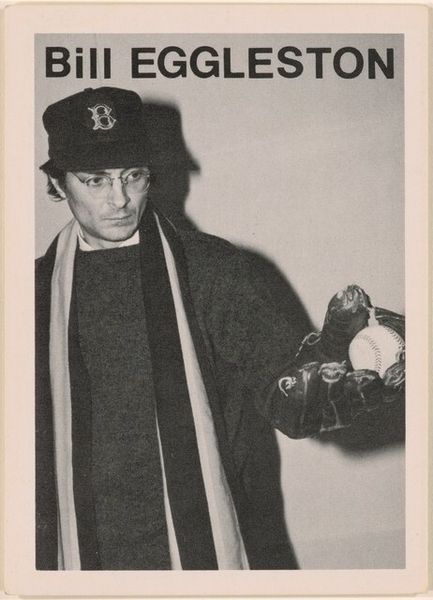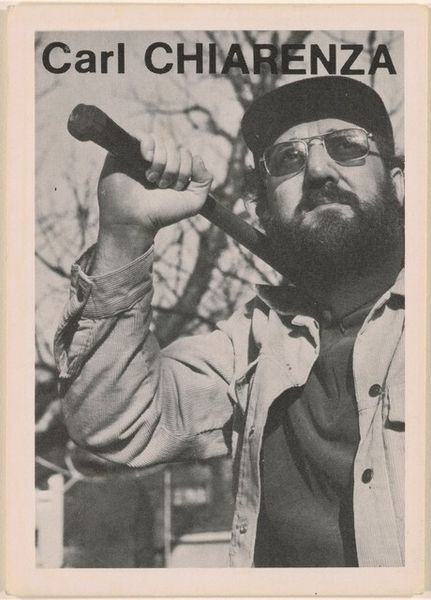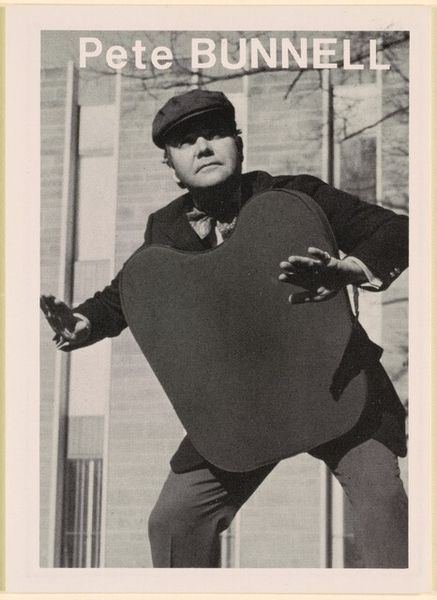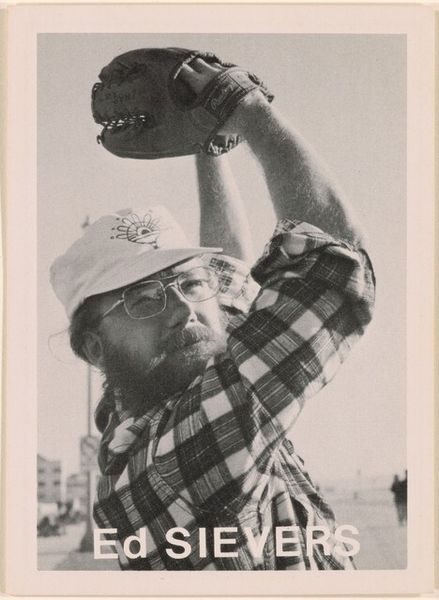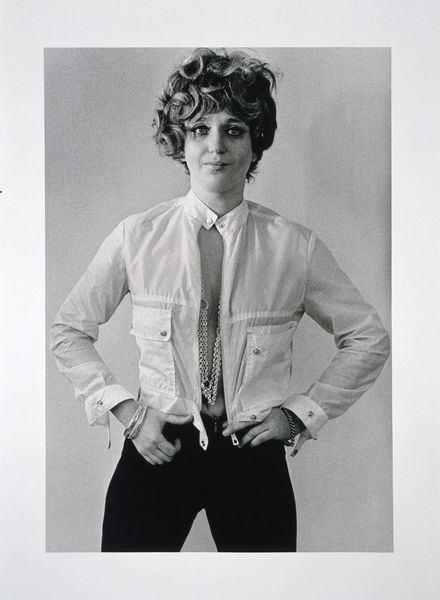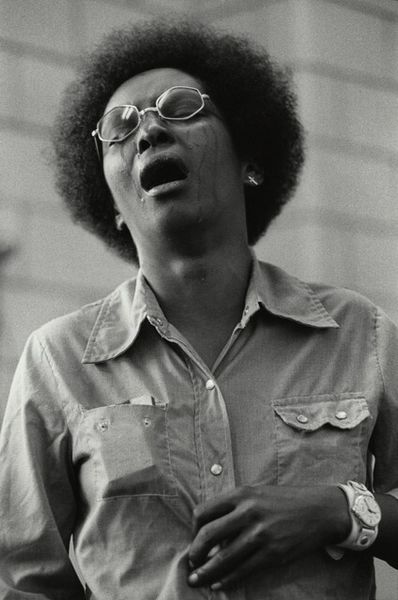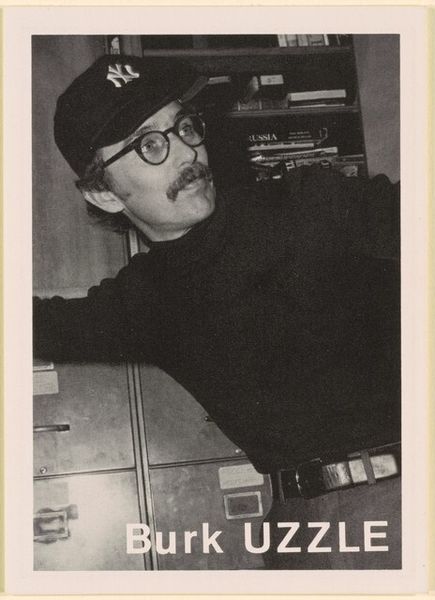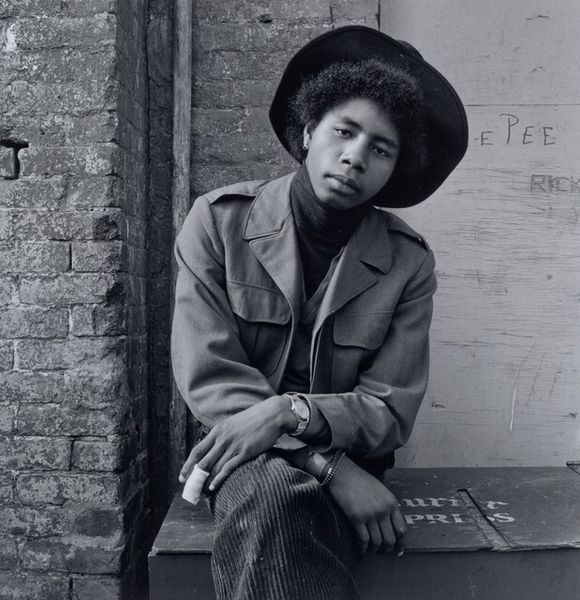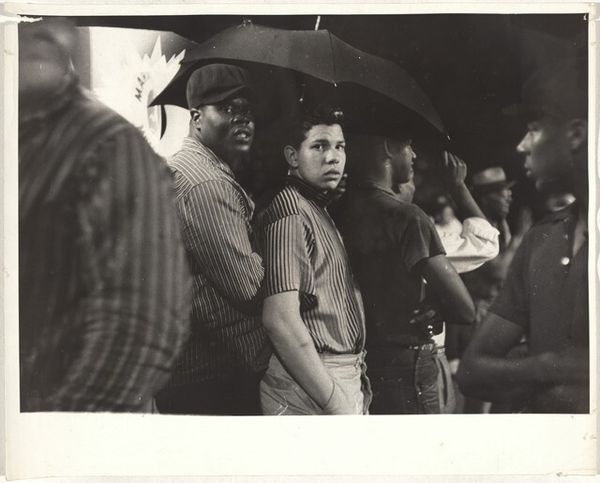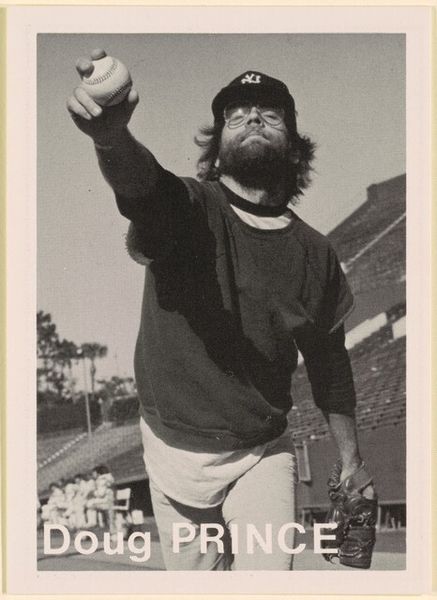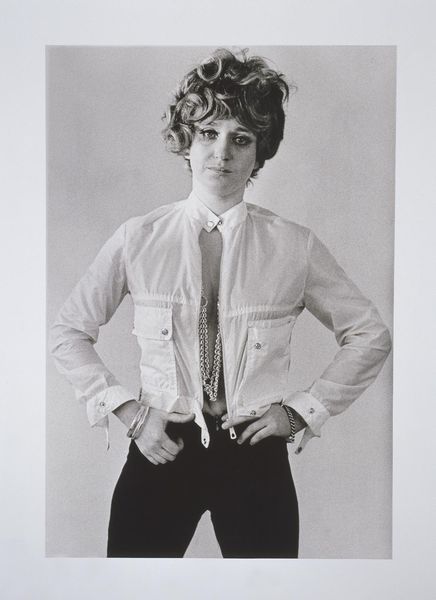
print, photography
#
portrait
#
print photography
# print
#
outdoor photograph
#
street-photography
#
photography
#
realism
Dimensions: image: 8 × 5.5 cm (3 1/8 × 2 3/16 in.) sheet: 8.9 × 6.3 cm (3 1/2 × 2 1/2 in.)
Copyright: National Gallery of Art: CC0 1.0
Curator: Looking at Mike Mandel’s black and white print, "Joe Deal," created in 1975, the initial impression I get is one of quiet confidence, maybe even aspiration. Editor: The first thing that strikes me is how this portrait freezes a specific cultural moment. There's a nostalgic feeling—the baseball cap, the patterned shirt—it speaks volumes about masculinity in the 70s, yet it transcends that specific era by hinting at social class, gender norms, and leisure. Curator: Right. I immediately fixated on the cap emblem – it's a sartorial marker of allegiance, extending identity. There is cultural weight and the suggestion of upward social mobility. Is Deal himself a Yankees fan, or is this simply about the appeal of status signifiers? What narratives do these markers invite about aspiration, community, or personal fulfillment? Editor: The New York Yankees baseball cap has long been more than mere sporting apparel. It carries weight as a symbol of working class identity transformed by commodity capitalism – almost universally recognizable but also historically tied to racial discrimination in professional sports. Is he performing for the camera or embracing something genuinely aspirational? Mandel captures both potential readings with impressive ambiguity. Curator: Considering Deal holds a baseball, does this evoke familiar visual tropes linked to 'America' - sport, competition, teamwork? The act of holding something links to traditions where objects represent more than mere material artifacts, conveying power. He holds this tool but he appears contemplative rather than in active engagement with sport, raising fascinating paradoxes. Editor: That interplay, I think, challenges straightforward readings. Is he holding tight, almost clutching this emblem of dominant culture, or is he casually presenting it to us, the viewers? The photo becomes about visibility – who is seen, who is not, and on whose terms. This adds levels of complex identity negotiation within everyday realities. It becomes about American power. Curator: On reflection, it highlights how even seemingly innocuous choices—the way one dresses or what accessories they display—can transform identity, especially within broader symbolic realms such as sports. Editor: Agreed. The image acts as an historical signifier as much as it serves as a marker for analyzing contemporary issues around performance and social identity. This resonates in how we continue decoding symbols like these today.
Comments
No comments
Be the first to comment and join the conversation on the ultimate creative platform.

